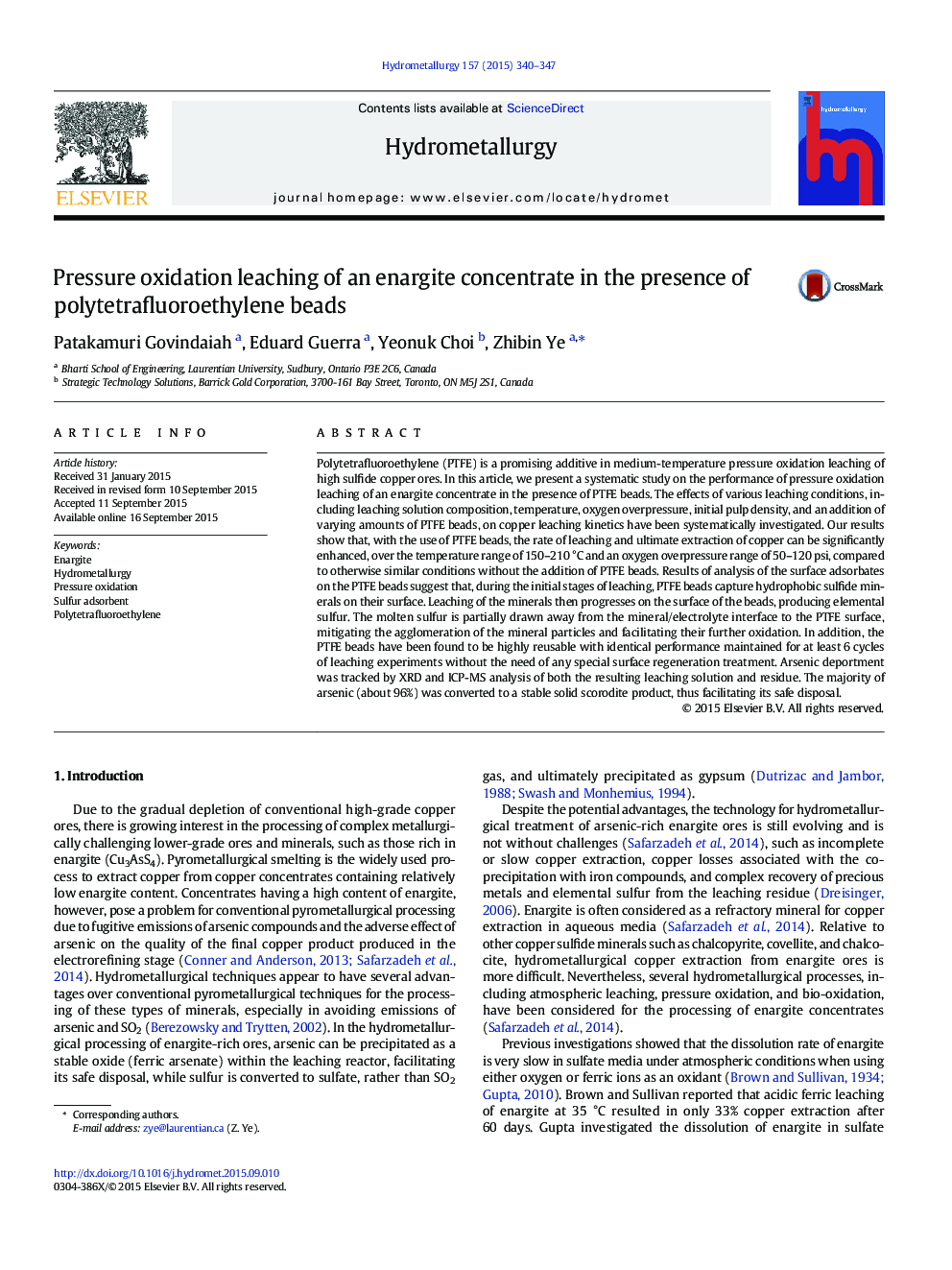| کد مقاله | کد نشریه | سال انتشار | مقاله انگلیسی | نسخه تمام متن |
|---|---|---|---|---|
| 6659293 | 462028 | 2015 | 8 صفحه PDF | دانلود رایگان |
عنوان انگلیسی مقاله ISI
Pressure oxidation leaching of an enargite concentrate in the presence of polytetrafluoroethylene beads
دانلود مقاله + سفارش ترجمه
دانلود مقاله ISI انگلیسی
رایگان برای ایرانیان
کلمات کلیدی
موضوعات مرتبط
مهندسی و علوم پایه
مهندسی شیمی
مهندسی شیمی (عمومی)
پیش نمایش صفحه اول مقاله

چکیده انگلیسی
Polytetrafluoroethylene (PTFE) is a promising additive in medium-temperature pressure oxidation leaching of high sulfide copper ores. In this article, we present a systematic study on the performance of pressure oxidation leaching of an enargite concentrate in the presence of PTFE beads. The effects of various leaching conditions, including leaching solution composition, temperature, oxygen overpressure, initial pulp density, and an addition of varying amounts of PTFE beads, on copper leaching kinetics have been systematically investigated. Our results show that, with the use of PTFE beads, the rate of leaching and ultimate extraction of copper can be significantly enhanced, over the temperature range of 150-210 °C and an oxygen overpressure range of 50-120 psi, compared to otherwise similar conditions without the addition of PTFE beads. Results of analysis of the surface adsorbates on the PTFE beads suggest that, during the initial stages of leaching, PTFE beads capture hydrophobic sulfide minerals on their surface. Leaching of the minerals then progresses on the surface of the beads, producing elemental sulfur. The molten sulfur is partially drawn away from the mineral/electrolyte interface to the PTFE surface, mitigating the agglomeration of the mineral particles and facilitating their further oxidation. In addition, the PTFE beads have been found to be highly reusable with identical performance maintained for at least 6 cycles of leaching experiments without the need of any special surface regeneration treatment. Arsenic deportment was tracked by XRD and ICP-MS analysis of both the resulting leaching solution and residue. The majority of arsenic (about 96%) was converted to a stable solid scorodite product, thus facilitating its safe disposal.
ناشر
Database: Elsevier - ScienceDirect (ساینس دایرکت)
Journal: Hydrometallurgy - Volume 157, October 2015, Pages 340-347
Journal: Hydrometallurgy - Volume 157, October 2015, Pages 340-347
نویسندگان
Patakamuri Govindaiah, Eduard Guerra, Yeonuk Choi, Zhibin Ye,